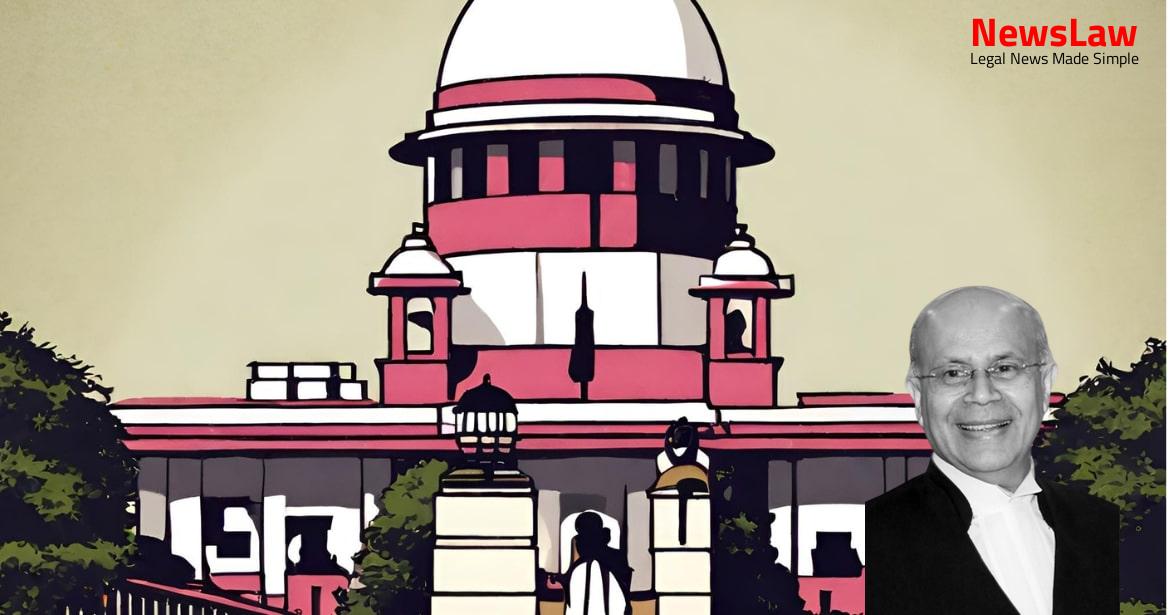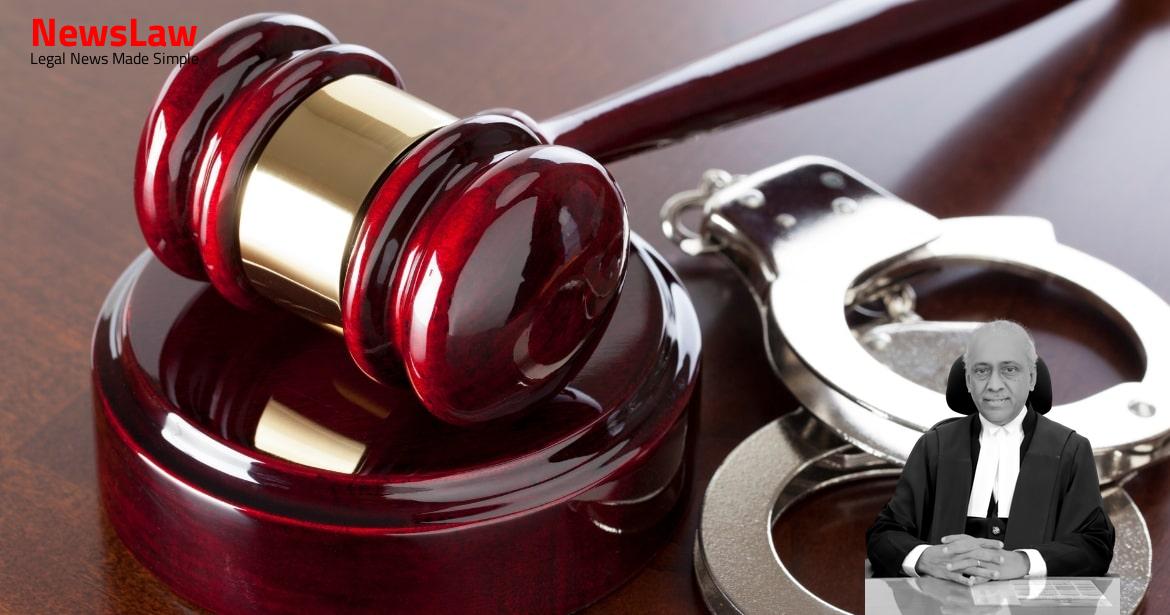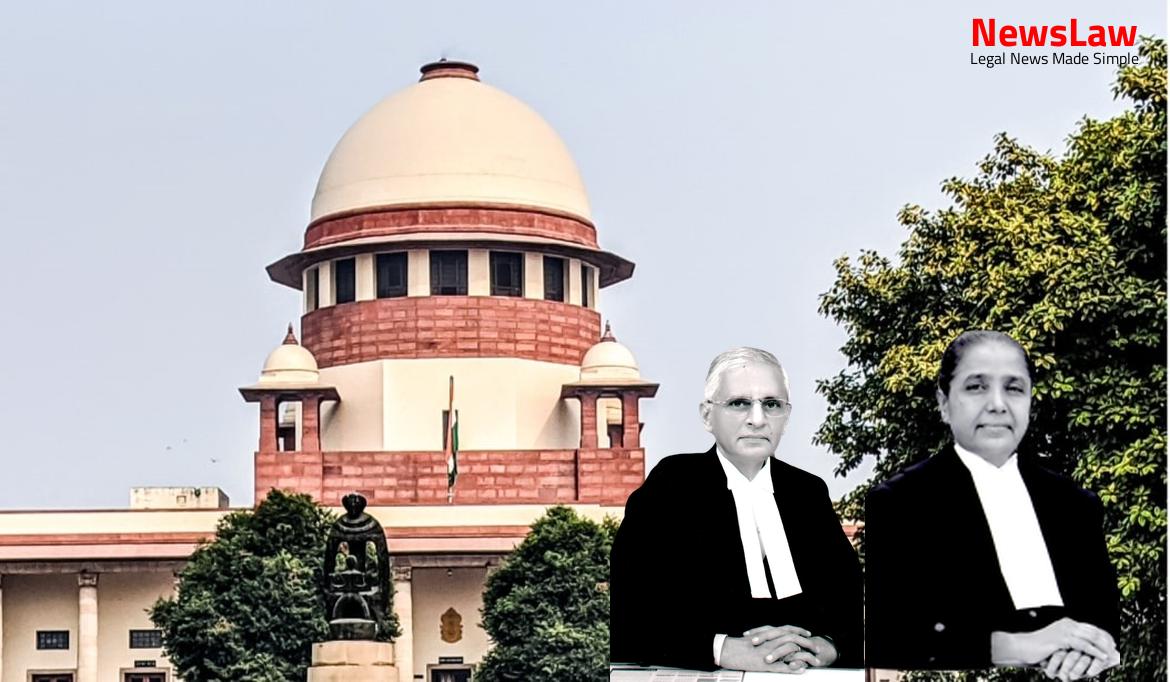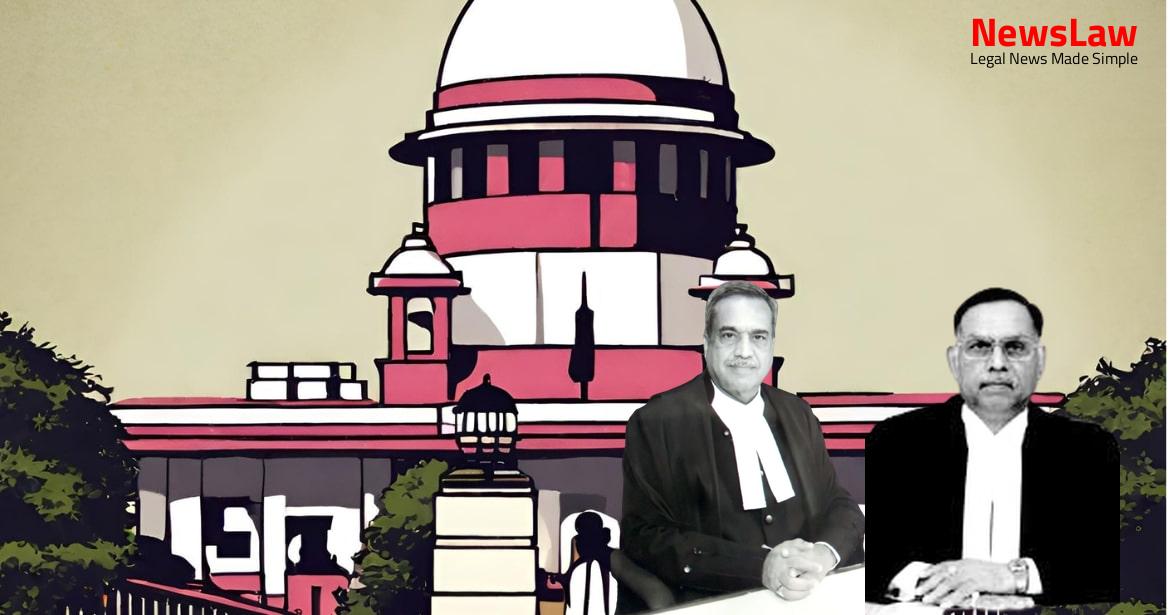In a significant legal case involving the restoration of assault convictions, the court’s detailed analysis of the evidence and legal principles is crucial. The focus lies on the court’s meticulous examination of the facts and the proper application of law, ensuring justice is served. Stay tuned for a deep dive into the legal intricacies of this case.
Facts
- PW-12 deposed that the respondents had threatened the deceased earlier.
- The stab wounds on the deceased were possible by a sharp instrument.
- There was no inconsistency between the ocular and medical evidence.
- Injuries 1 to 4 on the head were sufficient to cause death.
- The deposition of PW-2 was corroborated by an independent witness, PW-10.
- The deceased was brought to the hospital by PW-2 with serious injuries and expired later.
- Postmortem report revealed three stab wounds and nine incised injuries.
- The iron rod used for assault had a sharp edge.
- The High Court erred in not considering the sharp edge of the iron rod in the appreciation of evidence.
- Respondents assaulted with iron pipe, steel rod, and stick
- Three stab wounds and nine incised wounds were caused
Also Read: Promotion Dispute: Seniority-cum-Merit Principle
Arguments
- Shikhil Suri, amicus curie for the appellant, argued that the First Information Report was promptly lodged at 5:15 am on the same day by PW-2, naming the four respondents.
- In appeal against acquittal, if two views are possible, benefit of doubt should be given to the accused as per various case laws.
- Argument made that stab and incised injuries were not possible by a steel rod or iron pipe, casting doubt on the genesis of the occurrence.
- Acquittal by High Court deemed not warranting interference based on the above points.
Also Read: Caste Certificate Verification: Legal Analysis
Analysis
- The ocular evidence is considered the best evidence unless there are reasons to doubt it.
- The witness has corroborated PW-2 in all material particulars.
- Identification at night between known persons is acknowledged to be possible by voice, silhouette, shadow, and gait.
- The High Court erred in appreciation of evidence by overlooking the sharp turn edge of the iron rod used in the assault.
- The credibility of PW-2 as an eyewitness has not been doubted.
- Considering the lack of specific allegations against each respondent and their period of custody, the conviction may be altered to one under Section 304 Part II IPC.
- The recovery of weapons from the place of occurrence is doubtful as the seizure witnesses turned hostile.
- The presence of some light near the place of occurrence is acknowledged.
- The assailants’ familiarity with the victims and the visibility factors are important in judging the identification of assailants.
- The absence of FSL reports on fingerprints on the seized weapons is considered irrelevant.
- The variation in explanations about the time of occurrence raises doubts about identification.
- Inconsistency between medical and ocular evidence is not found in the case.
- The occurrence took place at 2:30 am.
- Identification in the dark was considered in the case of Nathuni Yadav vs State of Bihar.
- The court did not find much merit in the argument that identification was not possible in the night to give the benefit of doubt.
- The acquittal by the High Court was based on misappreciation of the evidence and overlooking relevant evidence.
- The acquittal was deemed unsustainable and set aside.
- There was no room for two views or doubt regarding the credibility of witnesses.
- The High Court’s conclusion was labeled as perverse and irrational.
Also Read: Enhanced Compensation for Loss of Estate in Motor Accident Case
Decision
- The appeal is allowed.
- The conviction of respondent nos. 1 to 4 by the Trial Court is restored.
- Respondent nos. 1 to 3 are directed to surrender within two weeks to serve out the remaining period of their sentence.
- A report shall be submitted to this Court within 8 weeks for listing the matter for that limited purpose.
- The Director General of Police, State of Gujarat is tasked with apprehending the fourth accused who is currently absconding and bringing him to justice.
- In the context of the assault, Section 304 Part II, IPC does not apply.
Case Title: PRUTHIVIRAJ JAYANTIBHAI VANOL Vs. DINESH DAYABHAI VALA . (2021 INSC 357)
Case Number: Crl.A. No.-000177-000177 / 2014



